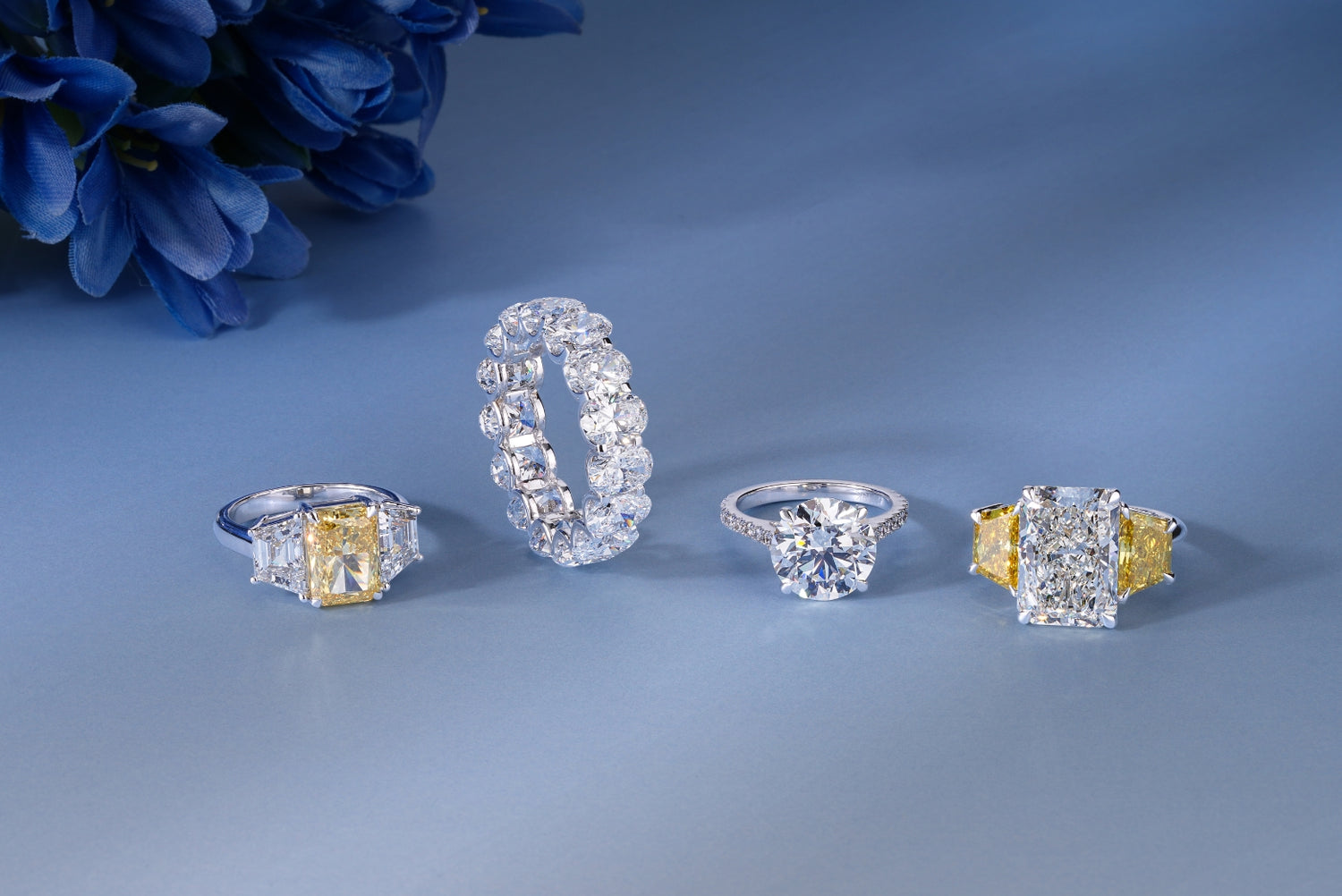If you’ve ever shopped for diamonds or inherited a piece of diamond jewelry, you might have wondered: Is this diamond real or fake? After all, there are many imitation stones out there that look almost identical to diamonds but are far less valuable. With so many options, including lab-grown diamonds, it can be tricky to tell them apart from natural diamonds or fake diamonds.
Luckily, there are several ways to test a diamond’s authenticity without needing to rely on expensive equipment or professional help. In this blog post, we’ll show you how to tell if a diamond is real, using a variety of methods you can try at home. From simple tests to expert tips, we’ve got you covered!
Why You Might Want to Test Your Diamond
Before diving into the tests, let’s explore why you might want to verify whether a diamond is real:
-
Valuation: Real diamonds are worth significantly more than fake ones. If you’ve invested in or been gifted diamond jewelry, you’ll want to ensure its value is accurate.
-
Peace of Mind: If you’ve purchased a diamond from a seller or online store, you might want to double-check that it’s real.
-
Sustainability: With lab-grown diamonds gaining popularity, it’s important to know if you’re purchasing a diamond that’s been created ethically and sustainably.
How to Tell if a Diamond is Real: 6 Simple Tests
Here are some easy and effective ways to test if your diamond is real or fake:
1. The Fog Test
This is a quick and easy way to check a diamond’s authenticity. Diamonds are excellent at dispersing heat, which is why this test works.
How to do it:
-
Hold the diamond between your fingers and breathe on it like you’re fogging up a mirror.
-
A real diamond will stay clear, while a fake one will fog up for a few seconds.
Why it works: Real diamonds don’t trap moisture, so they won’t fog up quickly. Fake diamonds, on the other hand, are often made of materials like cubic zirconia, which can trap moisture and fog up faster.
2. The Water Test
Diamonds are much denser than other gemstones or fake diamonds, so they sink in water.
How to do it:
-
Fill a glass with water.
-
Drop the diamond into the glass.
What to look for: A real diamond will sink to the bottom of the glass quickly due to its density. Fake diamonds, such as cubic zirconia or glass, might float or hover in the water.
Note: While this test is simple, it’s not foolproof. Some fake diamonds are also quite dense, but it’s still a good starting point.
3. The Loupe Test
A loupe is a small magnifying glass that jewelers use to examine diamonds closely. If you have one on hand, this can be one of the best ways to tell if a diamond is real.
How to do it:
-
Look closely at the diamond under the loupe, especially at the edges and the facets.
-
A real diamond will often have tiny imperfections (called inclusions) visible under magnification. These natural imperfections are what make each diamond unique.
What to look for: If the diamond is perfectly clear and has no inclusions, it might be a fake. However, some high-quality diamonds can have fewer visible inclusions, so this test is best used in conjunction with other methods.
4. The Heat Test
Diamonds can withstand high temperatures due to their heat resistance. You can test this by applying heat to the stone.
How to do it:
-
Heat a needle or pin in a flame.
-
Carefully touch the diamond with the heated pin (make sure to handle the diamond carefully, so it doesn’t get damaged).
What to look for: A real diamond will be able to withstand high temperatures without any change in appearance. Fake diamonds, such as glass, will often crack or break under heat.
5. The UV Light Test
Diamonds have a natural ability to fluoresce under ultraviolet (UV) light. This means that they emit a blue glow when exposed to UV light.
How to do it:
-
Shine a UV light (often called a black light) on the diamond.
What to look for: Most real diamonds will show some level of blue fluorescence under UV light, though this effect can vary from one diamond to another. Fake diamonds, such as cubic zirconia, usually won’t fluoresce under UV light.
6. The Diamond Tester Pen
If you want a reliable and more professional tool to test your diamond, a diamond tester pen is a great option. These devices can detect whether a diamond is real by measuring its thermal conductivity.
How to do it:
-
Simply place the tester on the diamond. If it’s a real diamond, the pen will beep or light up.
What to look for: A genuine diamond will trigger the tester to beep or show a light, indicating that it is real. However, some other gemstones might also pass this test, so it’s best used alongside other methods.
Fake Diamonds vs Real Diamonds: Key Differences
Now that you know how to test if a diamond is real, it’s also important to understand some key characteristics of fake vs real diamonds:
-
Cost: Real diamonds, whether natural or lab-grown, will always cost more than imitations. Fake diamonds like cubic zirconia are much cheaper.
-
Sparkle: While both real diamonds and imitations sparkle, a diamond’s sparkle is unique. The fire and brilliance of a diamond can’t be replicated by imitations, which often have a more artificial sparkle.
-
Durability: Real diamonds are the hardest material on Earth. Fake diamonds will scratch, chip, or lose their sparkle much more easily over time.
Conclusion: Trust Pear Jewels for Authentic Diamonds
Testing a diamond at home is a great way to verify its authenticity, but if you ever need further confirmation, don’t hesitate to consult a professional jeweler or gemologist. At Pear Jewels, we offer lab-grown diamonds that are just as stunning, durable, and ethical as natural diamonds. Our diamonds are carefully sourced and tested to ensure they meet the highest standards.
Whether you're shopping for a diamond engagement ring or simply looking for diamond jewelry to add to your collection, Pear Jewels has something special for you. Visit our website today to browse our wide selection of high-quality, real diamonds that are made to last a lifetime.




